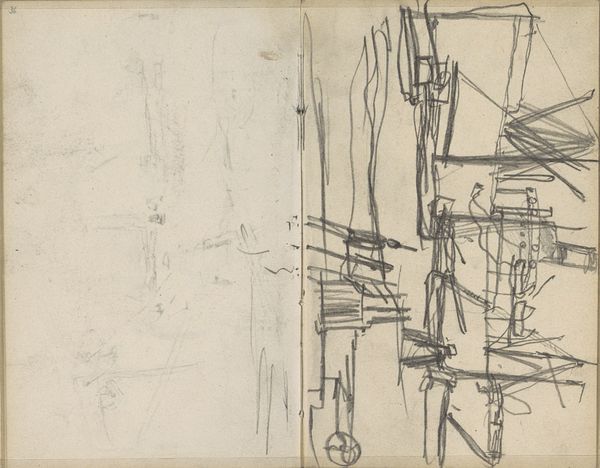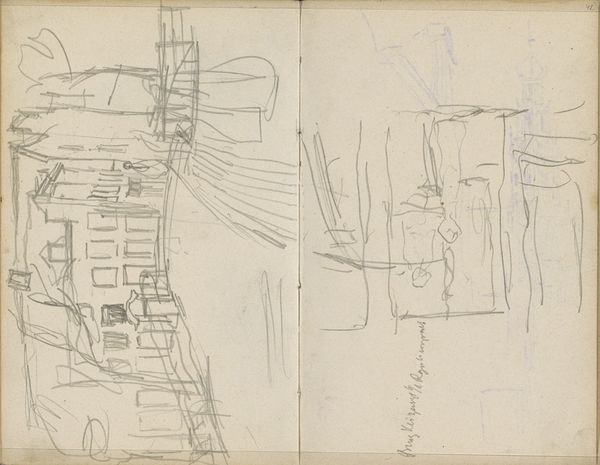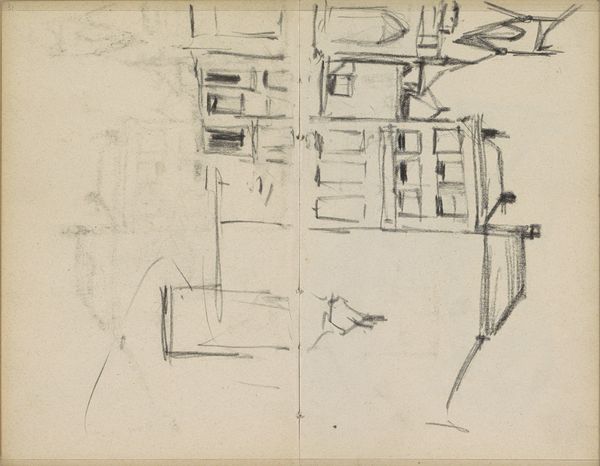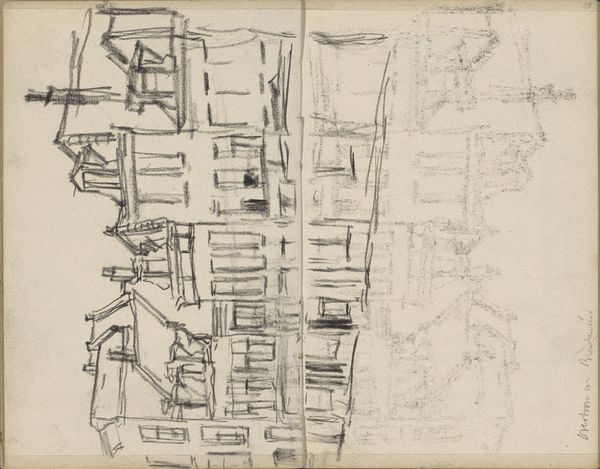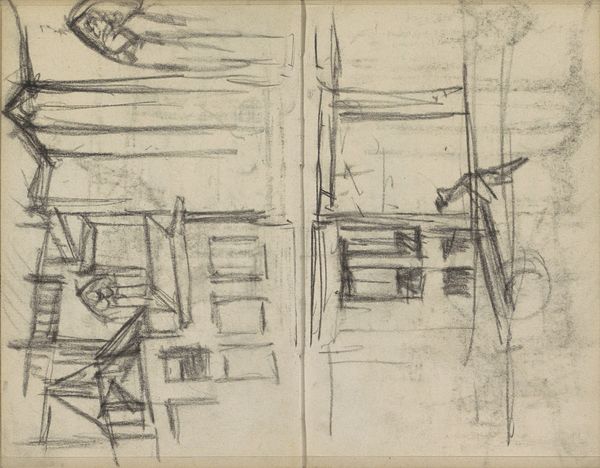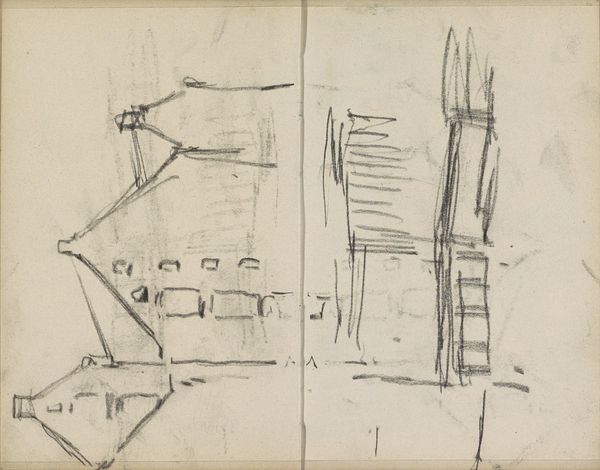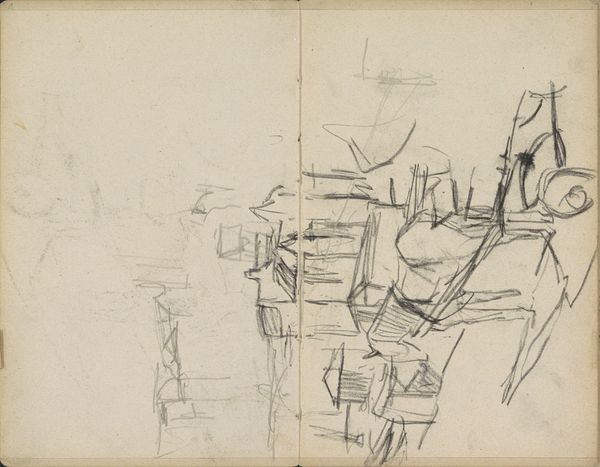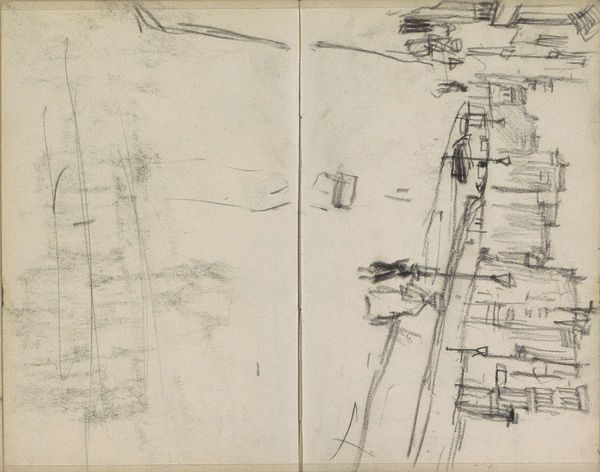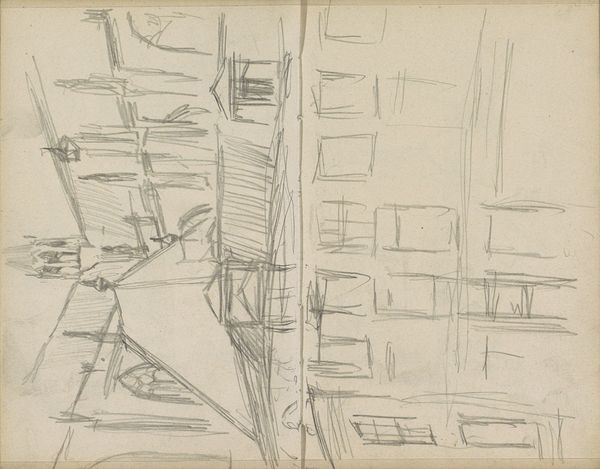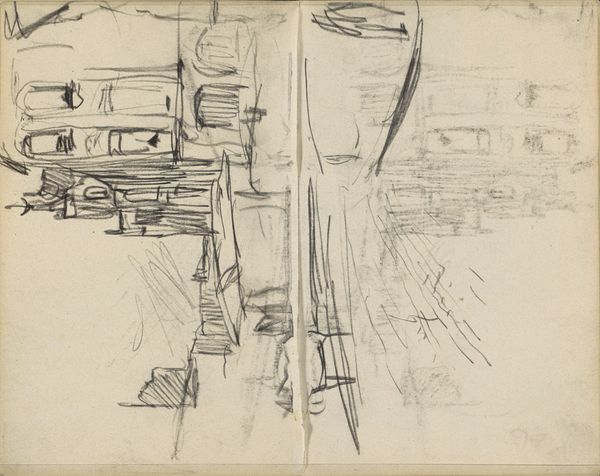
Brug op de hoek van de Brouwersgracht en de Prinsengracht te Amsterdam c. 1902
georgehendrikbreitner
Rijksmuseum
Copyright: Rijks Museum: Open Domain
Curator: This drawing by George Hendrik Breitner, titled "Brug op de hoek van de Brouwersgracht en de Prinsengracht te Amsterdam," circa 1902, offers an interesting glimpse into the artist's process. Editor: My immediate thought is of the materiality itself—the aged paper, the directness of the pencil strokes. It feels very immediate, almost ephemeral. Is that intentional, do you think? Curator: Breitner was, of course, working within the milieu of Impressionism. We can read it, within the institutional context of late 19th/early 20th century Dutch art, as a deliberate choice, reflective of modern life. Editor: Exactly. I am fascinated by how sketchbooks became such sites of creativity. Was it purely pragmatic, driven by the availability of cheap paper and pencils for capturing fleeting moments? Or was there a more deliberate embrace of the 'incomplete' sketch as a valid artistic expression? Curator: Both, I would argue. Amsterdam was rapidly urbanizing at this time, so these everyday urban scenes became representative of societal development. Museums like the Rijksmuseum collect such items and contribute to shaping art history narratives around Dutch progress. Editor: You know, the roughness of the line work, it makes me consider Breitner’s relationship to labor. The very act of creating this, quickly, efficiently, speaks to his understanding of a modern industrialized world and this piece gives us such clear insight into his methodology. Curator: And consider how these sketches become part of his larger artistic production, perhaps informing paintings. The relationship between the preliminary work and finished piece, within Breitner’s body of work as a whole, presents so many possibilities for further consideration and inquiry. Editor: Indeed. This offers not just a cityscape, but an opportunity to reflect on the changing roles of art, artist and artistic process at the dawn of the modern age. Curator: And, critically, reminds us that institutions actively shape, as much as reflect, those changes in societal context.
Comments
No comments
Be the first to comment and join the conversation on the ultimate creative platform.
